![]()
NASA has finally published the first colorized, full-resolution photos captured by the James Webb Space Telescope and the detail and resolution of the images is incredible, especially when compared to the images of these same cosmic objects captured by Hubble.
Hubble is no slouch and its observations have been instrumental in building humanity’s understanding of the universe over the last couple of decades. But the James Webb Space Telescope is the most powerful observatory ever launched into space, and the difference in imaging capability is stark.
Yesterday, PetaPixel shared a side-by-side comparison of the detail of galaxy cluster SMACS 0723 as captured by both Hubble and Webb, and below are three more comparisons that illustrate the incredible capabilies of Webb.
Up first is a look at the Southern Ring Nebula, also known as the “Eight-Burst” nebula. This is what is known as a planetary nebula and is an expanding cloud of gas that surrounds a dying star. It is nearly half a light-year in diameter and is located about 2,000 light-years from Earth.
First, the nebula as captured by Hubble:
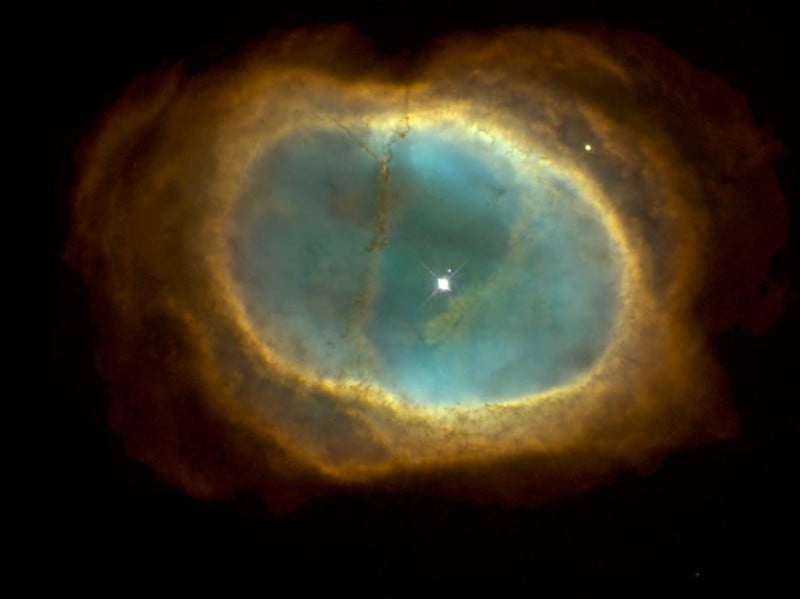
Compared to one of the two images of the nebula released today as captured by Webb:
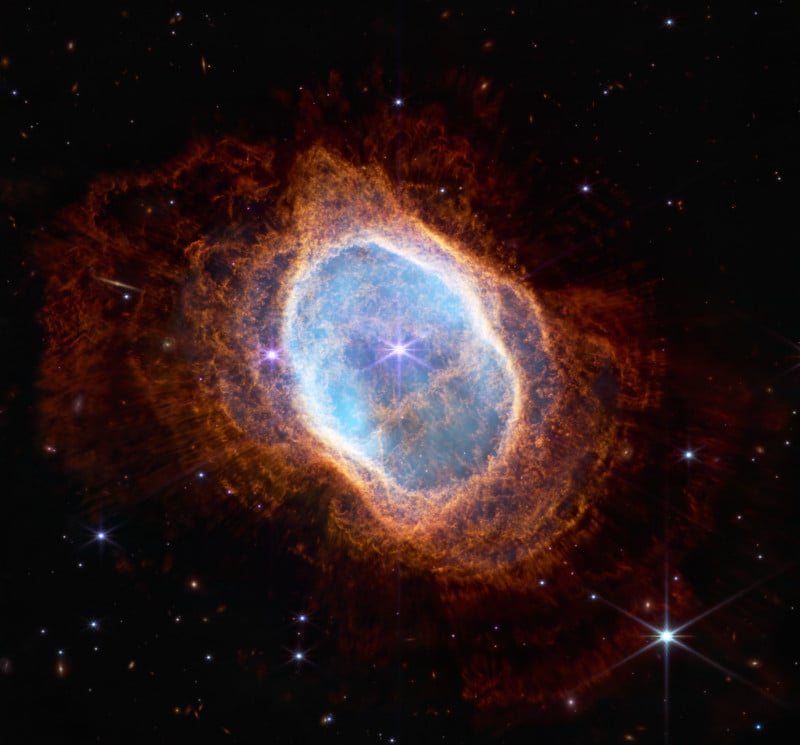
Stacked on top of each other, the level of visible detail in Webb’s photo is significantly greater than what Hubble is able to show.
![]()
Next is Stephan’s Quintet, also known as Hickson Compact Group 92. It is located in the constellation Pegasus and exists about 290 million light-years away. Four of the five galaxies within the quintet are what NASA describes as locked in a cosmic dance of repeated close encounters.
Below is Stephan’s Quintet as captured by Hubble:
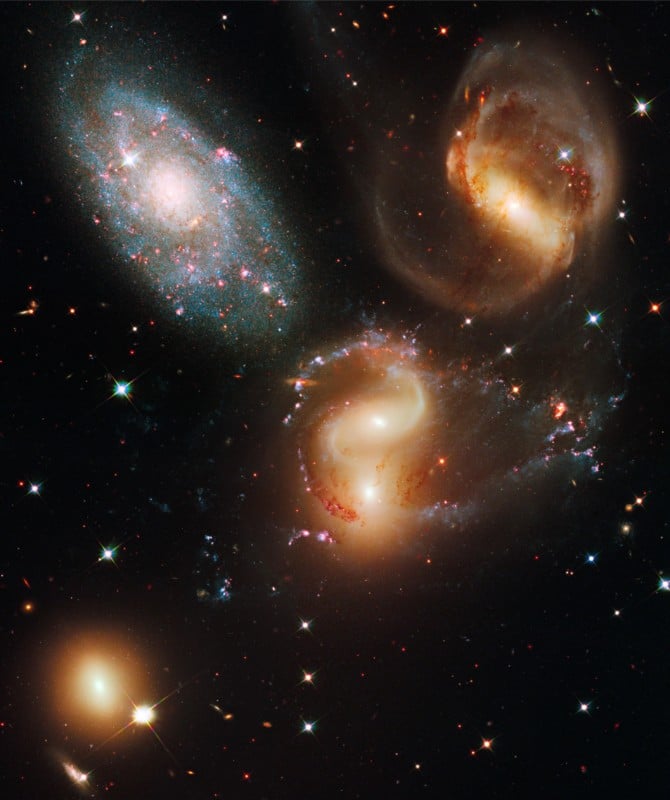
Compared to one of the two images released today as captured by Webb:
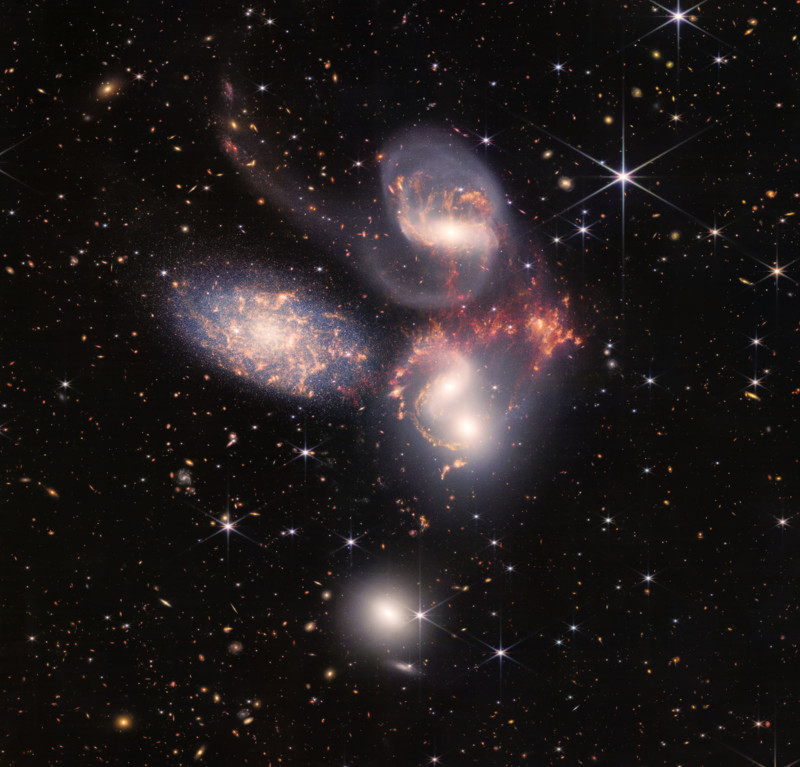
When seen stacked on top of each other, it’s clear how much more of the galaxy group and the details within it Webb can see.
![]()
Finally, and perhaps the photo that is the most impressive, is the Carina Nebula. The Carina Nebula is one of the largest and brightest nebulae that is visible in the night sky. It is located about 7,600 light-years away in the southern constellation of Carina.
Hubble has captured many photos of the Carina Nebula in the past, but the one below is the most similar to the one that Webb captured:
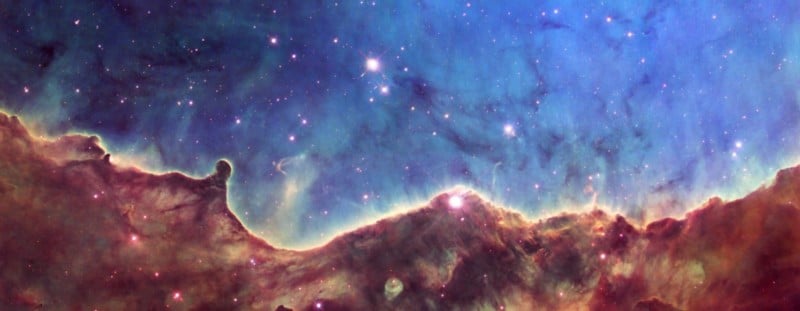
It’s a beautiful photo, but Webb’s view below shows a staggaring amount more detail and many more stars that were previously unknown to scientists.
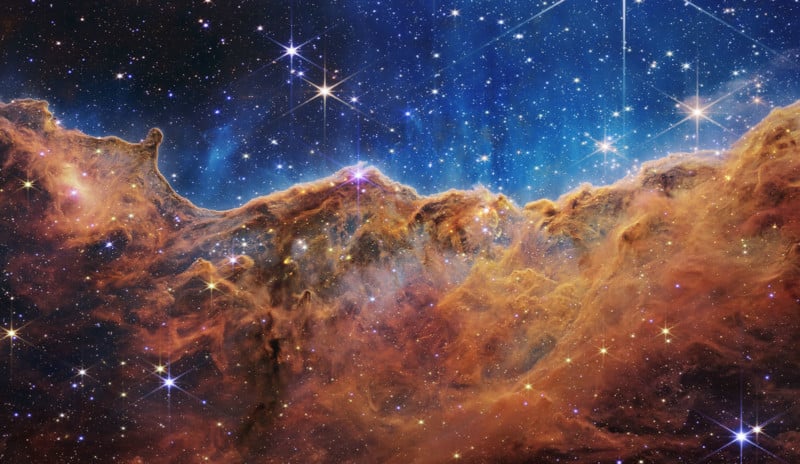
When stacked on top of each other, the sheer resolution and detail seen in Webb’s photo is even more obvious:
![]()
Webb’s photos are truly enormous compared to those captured by Hubble. The Webb team has uploaded the full resolution TIFFs from the observatory to the NASA Webb Telescope website, which is the best way to appreciate these historic photos.
Author: Jaron Schneider
Source: Petapixel



